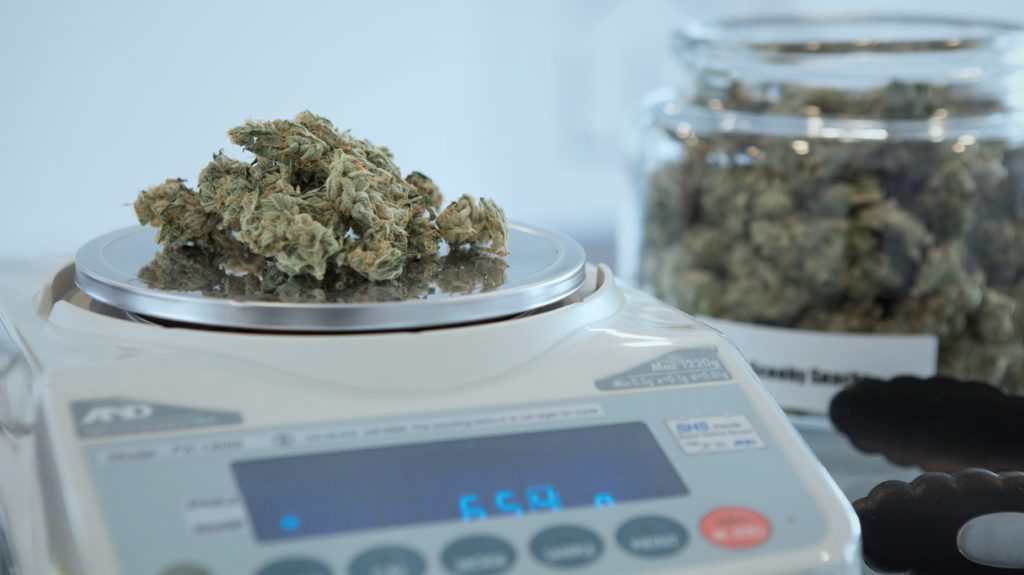CBD and THC: How To Find Your Perfect Ratio

CBD and THC: Why the Ratios Matter
No doubt about it: CBD and cannabis are surging in popularity. That means waves of new cannabis and CBD products — from flower and vapes to edibles and topicals — are flooding retail shelves. To navigate competing brands and product formats, you need a solid starting point for comparison. CBD and THC ratios provide a common denominator that can help.
Need a refresher on how ratios work? That’s okay. We understand. Instead of remembering math class, think of your favorite bartender or chef. When it’s two parts whatever to one part something else, that’s a two to one ratio, typically written as 2:1. In cannabis- and hemp-derived products, it works the same way, but the parts called out for comparison are usually CBD and THC. Some brands express ratios in measurements, too. Instead of 1:1, a label might read “75mg CBD: 75mg THC.”
The CBD:THC ratios tell you a lot about the products competing for your attention and what type of experience you might expect from your choices. By understanding these ratios and why they matter, one step at a time, you can make ratios work for you.
1. Start with CBD and THC
Before you can draw on ratios to narrow your product choices, you need to understand CBD and THC basics. All cannabis plants contain naturally occurring compounds known as cannabinoids. Researchers have identified more than 100 cannabinoids so far, but two of these compounds — CBD and THC — outshine the rest when it comes to abundance in the plant and their known potential for medical and recreational benefits.
CBD, short for cannabidiol, is non-intoxicating. That means it doesn’t cause the classic high associated with cannabis use. But THC, short for tetrahydrocannabinol, does. It’s the primary cannabinoid behind psychoactive effects such as euphoric highs and, depending on your tolerance and product choice, the anxiety or paranoia that can come with them.
2. Comprehend Cannabis vs Hemp
One plant species, known by botanists as Cannabis sativa, encompasses both cannabis and hemp. Plants with THC concentrations of less than 0.3% (that’s three-tenths of 1%) legally qualify as hemp in the United States. Many hemp strains favored by CBD product companies are bred for high concentrations of CBD. In the same way, many cannabis breeders work to maximize THC instead of CBD.
It’s important to understand — especially if your employer does drug testing — that hemp and cannabis both naturally contain CBD and THC. But hemp and hemp products aren’t subject to the same laws that regulate cannabis and medical marijuana. That’s why you’ll find hemp-derived CBD products on websites and in retail shops that can’t sell cannabis products, including CBD derived from cannabis plants.
3. Understand CBD and THC Synergy
Research suggests that CBD and THC individually offer multiple health and wellness benefits. THC for pain relief shows great promise, for example, while CBD helps treat anxiety for many people. But there’s a catch: people vary in sensitivity to these cannabinoids. A pain-relieving THC high may bring on anxiety for one person, while anxiety-calming CBD increases irritability in someone else. But products that combine CBD and THC in beneficial ratios may solve that dilemma and work more efficiently for conditions from insomnia to chronic pain, as well as enjoyment.
Many cannabis and CBD products favored for treating health conditions or delivering pleasurable recreational experiences contain CBD and THC — along with a full spectrum of lesser cannabinoids, flavonoids and terpenes. In a synergistic collaboration known as the Entourage Effect, the combination of these compounds impacts health, wellness and pleasure in ways the separate components don’t. CBD and THC ratios are at the core of the experience that results.
4. Discover Your “Perfect” Ratios
Every human body is different, so it only follows that every person’s experience with CBD- or THC-containing products differs, too. Recommendations from friends and influencers don’t scoop firsthand experience. That’s one reason it’s wise to start low and go slow in experimenting with hemp or cannabis products and different levels of CBD and THC. Exploring ratios of these two powerful cannabinoids and your unique response can help you discover the sweet spots you prefer.
Keep in mind that ratios vary significantly between brands and product formats. Also, some brands may list THC:CBD instead of CBD:THC. If you’re unsure, ask about the numbers and what to expect. For example, a product with a 20:1 CBD to THC ratio contains 20 times more CBD than THC. For most people, that translates to minimal or no psychoactive “high.” A 1:1 ratio signals equal measures of CBD and THC, along with other product components. This ratio typically produces a balanced, yet notably psychoactive experience, but not for all. Product formats, such as fast-working inhalables vs slower-acting edibles, also influence how quickly you’ll respond and how long effects may last.
While CBD and THC ratios aren’t the only factors that affect your health or your high, they can provide starting points for comparing products and your body’s response. Taking it slow and experimenting, with ratios as a guide, can help you discover the products and perfect combinations to deliver the experience you desire.

